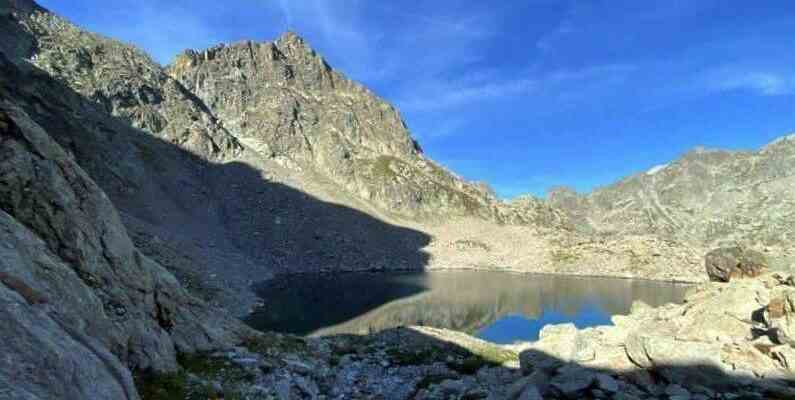Météo-France made it official this weekend. “The hydrological year, which begins in September, 2021-2022 was the driest ever observed in the Alpes-Maritimes”, with 620 mm of precipitation in one year, or 56% less than normal. And the consequences of this historic drought can also be seen in the mountains.
In the Mercantour national park, the level of the lakes has dropped, sometimes up to one meter, “wetlands have dried up, some springs have already dried up and the flow of the torrents is becoming very low”, is it written on the site of the park. “We have never seen that,” exclaims Emmanuel Gastaud, from the awareness and development service of the territory of the Mercantour national park. And these observations do not date from the summer. “Already during the winter, there has been little snow due to the lack of precipitation,” he continues. There was then a general drop in the water level of the lakes. »
Water stress harmful to flora and fauna
The lack of water directly affects mountain populations. The Mercantour National Park is home to 8,000 different species and more than 40% of French flora for which the lack of rain has led to “water stress”. The national park referent explains: “For any population, even flowers, the purpose of existence is to reproduce and to persist. And a flower that has no water cannot bear fruit and withers. »
Olivier Bressac of Guides Tinée Mercantour, guide for eight years, adds: “In general, the plants were a month ahead of flowering this summer. For example, genepi, which can be picked from August, was already burnt out in mid-July. »
Same thing for animals. “The aquatic fauna suffers from the drying up of the lakes and is reduced,” continues Emmanuel Gastaud. Common frogs, for example, are now forced to move and find new places to breed. »
Coming “disasters”
Behaviors that will become widespread by the end of the century with the increase in temperatures of 2°C to 5°C predicted by the latest climate estimates. This means that it will be necessary to “climb an additional 900 m in the mountains to find the same temperature as before, calculates the guide. The species will then migrate upwards because nature will try to find its balance. But if these events are repeated, the problems will be general: for the fauna, the flora and for us, who live in the mountains. “For Emmanuel Gastaud, “we then touch on what will happen to us in a few years with the disappearance of certain species. »
And for the soils, the consequences are also “catastrophic” because, being completely dry, they have more difficulty absorbing the rains. Jeannine Blondel, volunteer at the French Federation of Associations for the Protection of Nature and the Environment (FNE) Paca, says: “If storms arrive tomorrow, whole sections of the mountain will fall. »
This summer, she personally “fought” to limit the water in showers on the beaches. And gestures, “everyone can do it” even “if we can’t do anything against nature”, as Emmanuel Gastaud points out. He concludes: “The observation is there, we can do nothing more. But everyone, at their level, suffered and must adapt to save energy. »
For more information on these topics, FNE organizes on September 24 in Saint-Laurent-du-Var workshops, exchanges and a round table to raise awareness and inform “the general public” on the “lessons to be learned for the future of this drought 2022”.

